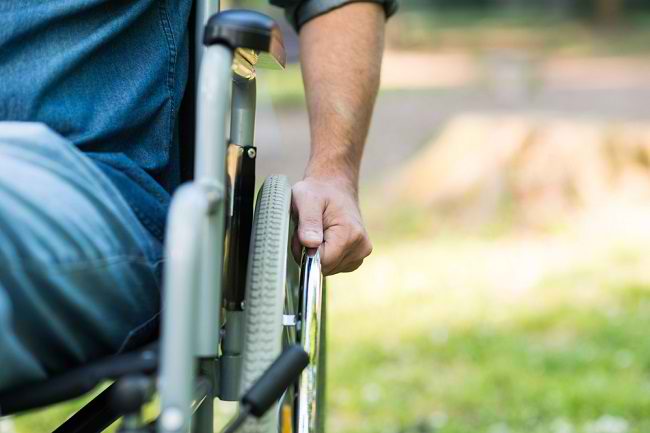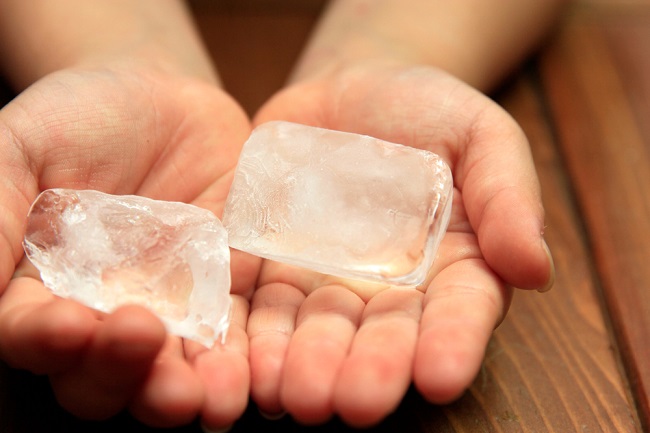Pediatric surgery is a collection of surgical procedures performed to treat various diseases in children, ranging from abnormalities of internal organs to tumors. There are many differences between surgical procedures in children and adults. Therefore, doctors who handle pediatric surgical procedures are different from general surgeons.
Pediatric surgery developed in the mid-20th century, more precisely around the 1950s, where there were still many threats of death to infants caused by certain diseases, but treatment and treatment were not yet available. Pediatric surgery only focuses on the implementation of procedures for treating disease in children. Doctors who specialize in pediatric surgery are called pediatric surgeons (Sp. BA).

Indications for Pediatric Surgery
Pediatric surgery is generally performed to treat conditions:
- Congenital heart disease.Abnormalities in the structure of the heart since birth that interfere with heart function, and cause symptoms such as easy fatigue, irregular heartbeat, and chest pain.
- patentductus arteriosus (PDA). PDA is a condition in which ductus arteriosus still open even though the baby has been born. Ductus arteriosus are blood vessels that the baby needs as a respiratory system while in the womb. These blood vessels normally close when the baby is born. However, if ductus arteriosus If the baby is still open when the baby is born, it will cause complaints in the form of shortness of breath, fast heart beat, and easily tired.
- Intestinal atresia.Intestinal atresia is a congenital defect in which several parts of the intestine are narrowed or cut off. This condition causes disturbances in the baby's digestive system.
- Esophageal atresia.A birth defect in which the esophagus does not develop as it should. This causes the baby to have difficulty swallowing and shortness of breath.
- Tracheoesophagealfistula. Growth abnormalities in the esophagus (esophagus) and trachea. The esophagus and trachea are two separate tubes. The esophagus is a tube (channel) for distributing food consumed from the mouth to the stomach, while the trachea is the passage for air to enter the lungs. When a child suffers from this condition, the esophagus is severed and connects to the trachea. The connection of the esophagus to the trachea can certainly interfere with lung and stomach function.
- Diaphragmatic hernia.A birth defect in which there is a gap in the diaphragm so that organs in the abdominal cavity, such as the intestines, stick out through the diaphragm and into the chest cavity. This condition causes shortness of breath and a fast heart beat.
- Omphalocele.A disorder in which the intestines or other organs of the body exit through a hole or gap in the belly button. This condition can cause the organ that comes out of the navel does not get enough blood supply, so its function is disrupted.
- Wilms tumor.Wilms tumor is a tumor that attacks the kidney. This condition causes symptoms in the form of fever, constipation, and pain in the abdomen.
- Neuroblastoma.Cancer that develops from immature nerve cells. Symptoms include fever, weight loss, and loss of appetite.
- Pyloric stenosis. Pyloric stenosis is a disorder in which the pyloric muscle increases in size and thickness. The pylorus muscle is a muscle that serves to hold the incoming food, until the stomach is ready for the next digestive process. Abnormalities in the pylorus muscle can cause obstacles in the process of digestion of food in the stomach.
- Intussusception. Part of the intestine that is folded and infiltrated into another part of the intestine. This interferes with the distribution of food and fluids, blood supply, and can even cause swelling and pain.
- Midgut volvulus.A disorder in which the intestines are twisted or tied due to an error in turning while the fetus is developing in the womb. This condition can cause symptoms in the form of vomiting and pain in the abdomen.
Warning
Each surgical procedure in children has different provisions. Consult a doctor before the procedure is carried out.
Surgical procedures generally use anesthesia. In addition, some procedures also use antibiotics to avoid infection. If you have a history of allergies to anesthetics or antibiotics, consult your doctor so that the management can be adjusted.
When using an anesthetic, the doctor will advise the patient to avoid using drugs that contain aspirin. Also, tell your doctor if you are taking supplements or herbal products, such as:
- Ginseng
- Garlic
- Ginkgo biloba
Likewise, blood-thinning medications can increase the risk of bleeding. Usually the doctor will ask the patient to stop using the drug, at least 1 week before surgery. Tell your doctor if you are taking blood thinning medicines, such as:
- Apixaban
- Aspirin
- warfarin
- Heparin
- Rivaroxaban
- Dabigatran
Pediatric Surgical Preparation
At first, the doctor will start by conducting a question and answer session. The patient's parents or the patient himself will be asked to describe the complaints, history of the disease he has, and the drugs he is currently taking. Some procedures also have conditions or require special measures, such as a urine test in Wilms tumor surgery.
Each pediatric surgical technique has a different preparation. But generally, the doctor will conduct an examination first. Examination is done to find out other diseases that may be suffered or allergies that exist.
The examination carried out by the doctor can be in the form of imaging methods such as MRI and CT scans, or in the form of blood tests. The results of the inspection will be used to support the smooth running of the procedure. Because generally pediatric surgery uses general anesthesia, The doctor will ask the patient to fast for 6 hours before anesthesia is given and the procedure begins.
Pediatric Surgical Procedure
In the early stages, the patient will be taken to the operating room. The doctor will put on special clothes that have been provided to the patient. Next, the patient will be positioned at the surgery site, either in a sitting, supine, or prone position, depending on the surgical procedure to be performed.
Then the doctor will give anesthesia, it can be in the form of local, regional, or general anesthesia (total anesthesia), so that the patient does not feel pain from the incision during the procedure. When the patient begins to become unconscious, the doctor will insert a breathing tube through the patient's mouth. Before the surgery is performed, the area of the skin to be operated on is cleaned first with a special antiseptic liquid. This is done so that the patient is protected from infection.
After the skin area to be operated on has been cleaned, the procedure is continued by making an incision. The number and size of the incisions and their location vary, depending on the condition being treated. For example, in the hernia treatment procedure, the incision made is only 1-2 cm.
There are also several procedures that use tools in its implementation. As in surgery performed to treat a hernia, a laparoscope is used to assist doctors in seeing the condition of the organs as well as simplify the operation process.
After Pediatric Surgery
Generally, after a surgical procedure on a child is performed, the doctor will suggest that the patient stay in the hospital for a few days until his condition recovers and allows him to go home. This is intended to make it easier for doctors to carry out postoperative supervision.
In some procedures, a breathing tube is still attached to the patient. The tube will be removed when the patient's condition has recovered and can carry out normal activities.
Side effects of the procedure can occur in any patient. Different procedures, different side effects that can occur. In some cases, the surgical incision will cause pain, redness, or swelling. This is quite normal and can last for several days after surgery. If the pain at the incision site is bothersome, your doctor may prescribe painkillers.
The patient's parents can also perform self-care for the incision, so that the wound does not become infected and recovers faster. Some of the treatments that can be done include:
- Avoid water contact with the incision for at least 24 hours after surgery. However, it would be better if it was consulted with a doctor.
- Clean the skin around the incision with a soft, sterile cloth.
- Avoid cleaning the skin around the incision with antibacterial soap, alcohol, iodine, or peroxide. The use of these materials can slow down the recovery period of the incision.
- Avoid activities or movements that can pull or press on the skin around the incision.
Patients are allowed to go home when their condition is good enough. The length of the procedure and recovery will vary, depending on the action taken and the condition being treated.
Pediatric Surgery Risk
The risks for each procedure are different. However, because pediatric surgical procedures generally require an incision, there are several risks that can occur, namely:
- The incision area hurts
- The incision and the surrounding skin is swollen
- Reddened skin around the incision area
In addition, many pediatric surgical procedures also use anesthesia. The use of anesthesia can cause complaints in the form of:
- Nauseous
- dry mouth
- Sore throat
- Sleepy
- Hoarseness
- Throw up
In some procedures, antibiotics are given to the patient to minimize the occurrence of infection. However, antibiotics themselves can cause side effects, such as:
- Diarrhea
- Throw up
- Stomach ache









